Predicting where the stock market is going is a tricky business. Very few investors or traders have a consistent, strong track record when it comes to guessing the short- to medium-term direction of the market. That’s because there’s always plenty of noise in the short-term.
While there aren’t any obvious events this year (like an election) which could move the market, there are always plenty of unexpected occurrences which can change investor perception. The biggest potential catalyst in the coming months is probably North Korea. However, investors are already starting to write off the rhetoric involved in the situation.
Of course, you can’t ignore interest rates and upcoming Fed meetings. However, the market feels a December rate hike is all we’ll see this year, and Yellen’s Fed has been pretty transparent. Most likely, the Fed isn’t going to offer any major surprises for the balance of 2017.
On the other hand, the choice of a new Fed Chair could disrupt the markets somewhat if an interest rate hawk is brought on board. A more aggressive approach to raising rates could certainly impact stock prices. However, at this time we don’t have any idea who the next Chair will be and if that person will even be confirmed by the Senate.
Other than political events, which tend to only have short-term impact on stock prices, the only big changes in market direction could come from economic news. Particularly, if there are economic surprises, stocks may react more than expected.
This is primarily only a factor with major reports like monthly jobs, GDP, or inflation numbers. Lately, economic news has been pretty much on target, and there’s no reason to believe it will change significantly. Clearly, the hurricane damage will factor into jobs numbers, but economists will likely have taken those changes into account.
Here’s the thing…
Options traders have a better chance at making consistently successfully trades because they don’t typically have to pick a direction to make money. They can place high probability trades (selling options) which make money if stocks stay in a trading range or move sideways.
In fact, a pretty massive range-bound options trade was just made last week in the SPDR S&P 500 ETF (NYSE: SPY). SPY is the most heavily traded ETF in the world and tracks the S&P 500 index, a common proxy of the overall market. This particular trade was an options strangle, where the trader sold an out-of-the-money call and put at the same time, in the same expiration period (but at different strikes).

The short strangle consisted of selling the December 15th 263 calls and 237 puts. The credit received for the strangle was $1.64, and it traded about 21,000 times. That means the trader collected over $3.4 million in premium as a credit, and will keep all of it if SPY stays between $237 and $263 by December expiration.
Breakeven points for this trade are around $235 and $265. With SPY at roughly $254 at the time of the trade, the trader has more cushion to the downside ($19 down compared to $11 to the upside). Clearly the trader is less worried about upside for the remainder of the year.
Once again, there’s not much expected to occur between now and December which could roil the markets significantly. Of course you never know, which is why I’d recommend a very different trade than this. Frankly, selling strangles isn’t the sort of thing most traders should be doing. Leave that sort of strategy to the big institutions and professionals.
Instead, buying a straddle (buying the call and put at the same strike, at the same time, in the same expiration) could be a profitable strategy while also not in direct opposition to the short SPY strangle we just discussed. You see, a large stock index like the S&P 500 could easily sit within the range of the short strangle, but an individual sector could see a lot more movement.
One such sector is consumer staples. The Consumer Staples Select SPDR Fund (NYSE: XLP) is sitting right at the 200-day moving average, and could easily be much higher or lower by December 15th. Plus, the December 15th 54 straddle (buying the 54 call and put) is trading for less than $2.

XLP would only need to go to $52 or $56 in the next 10 weeks or so to make money. That seems like a very achievable goal with so much time left before expiration.
[FREE REPORT] Options Income Blueprint: 3 Proven Strategies to Earn More Cash Today Discover how to grab $577 to $2,175 every 7 days even if you have a small brokerage account or little experience... And it's as simple as using these 3 proven trading strategies for earning extra cash. They’re revealed in my new ebook, Options Income Blueprint: 3 Proven Strategies to Earn Extra Cash Today. You can get it right now absolutely FREE. Click here right now for your free copy and to start pulling in up to $2,175 in extra income every week.
Source: Investors Alley


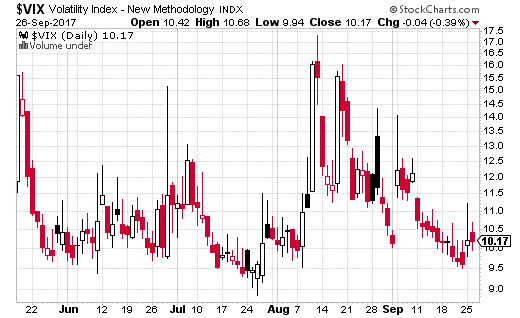

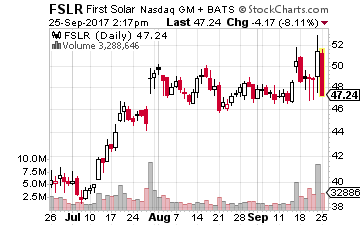 Whether you believe in the use of tariffs or not, one certain consequence of a solar tariff is sales of US manufactured panels will increase. That’s why stock investors are snapping up shares in companies like First Solar (NASDAQ: FSLR), the largest solar company in the US.
Whether you believe in the use of tariffs or not, one certain consequence of a solar tariff is sales of US manufactured panels will increase. That’s why stock investors are snapping up shares in companies like First Solar (NASDAQ: FSLR), the largest solar company in the US.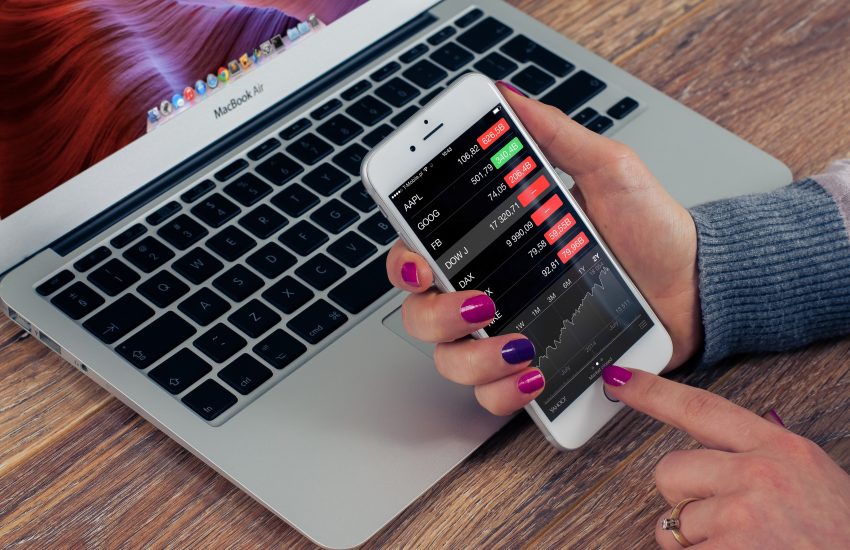
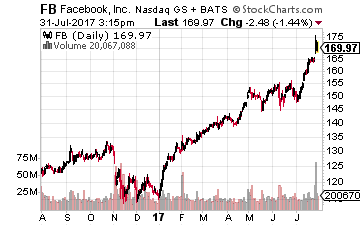 More importantly, user growth is clearly resulting in robust ad revenues. Last quarter, FB generated $9.2 billion in ad revenue, 87% coming from mobile ads. Quarter over quarter, FB’s monthly active users jumped 3.4% to over 2 billion. Daily active users came in at 1.3 billion – a stunning amount of people if you think about it. Remember, that’s daily users. No wonder FB’s ad platform is so dang popular.
More importantly, user growth is clearly resulting in robust ad revenues. Last quarter, FB generated $9.2 billion in ad revenue, 87% coming from mobile ads. Quarter over quarter, FB’s monthly active users jumped 3.4% to over 2 billion. Daily active users came in at 1.3 billion – a stunning amount of people if you think about it. Remember, that’s daily users. No wonder FB’s ad platform is so dang popular.
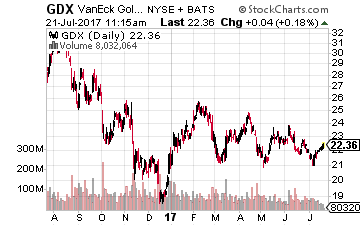 More specifically, the trader purchased a large strangle in the VanEck Vectors Gold Miners ETF (NYSE: GDX) expiring in June of 2018. A strangle consists of an out-of-the-money call and out-of-the-money put purchased simultaneously in the same expiration period. In this case, with the ETF at just over $22, the buyer purchased the 18 put and the 30 call. That’s a very wide strangle for such a low underlying price. In fact, with the cost of the trade at around $1.50 per strangle break-even points are all the way at around $16.50 and $31.50.
More specifically, the trader purchased a large strangle in the VanEck Vectors Gold Miners ETF (NYSE: GDX) expiring in June of 2018. A strangle consists of an out-of-the-money call and out-of-the-money put purchased simultaneously in the same expiration period. In this case, with the ETF at just over $22, the buyer purchased the 18 put and the 30 call. That’s a very wide strangle for such a low underlying price. In fact, with the cost of the trade at around $1.50 per strangle break-even points are all the way at around $16.50 and $31.50.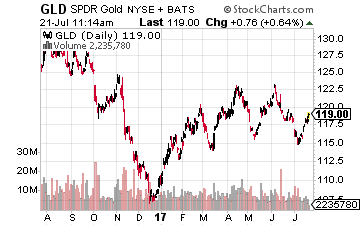 For example, the SPDR Gold Shares ETF (NYSE: GLD) looks like it could easily be on the verge of a big move either direction. This direct play on the price of gold could also be a good choice if you believe the precious metal is going to move in the next several weeks instead of months.
For example, the SPDR Gold Shares ETF (NYSE: GLD) looks like it could easily be on the verge of a big move either direction. This direct play on the price of gold could also be a good choice if you believe the precious metal is going to move in the next several weeks instead of months.